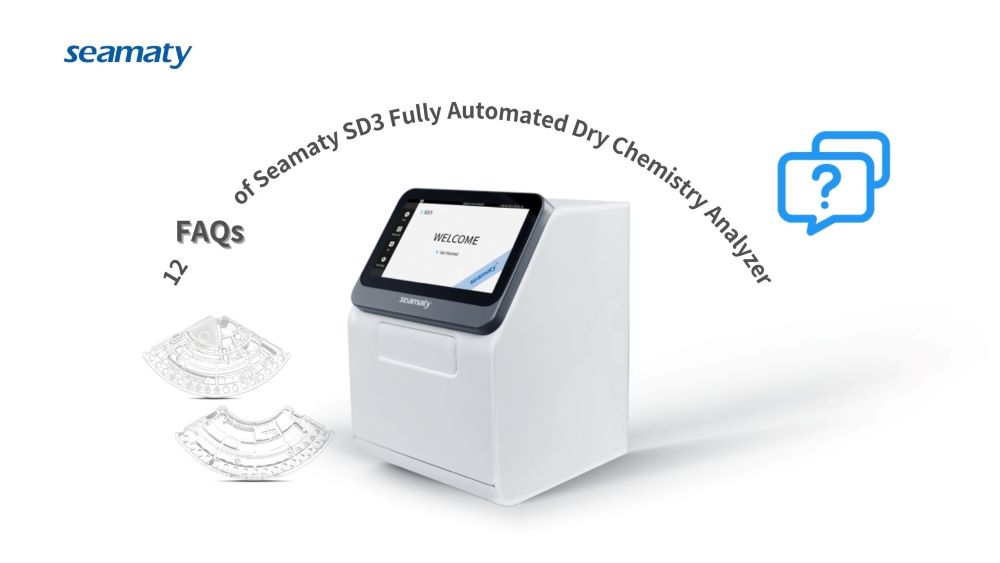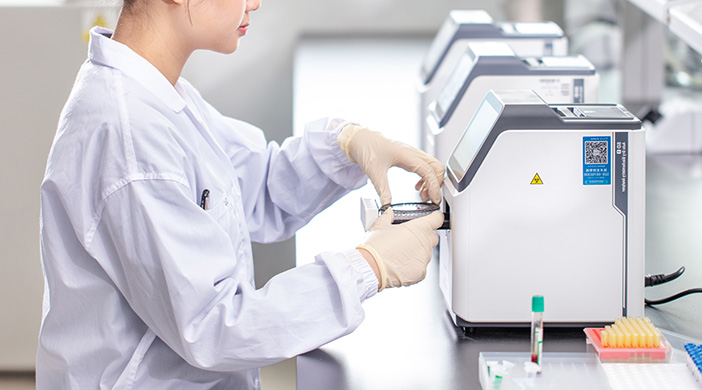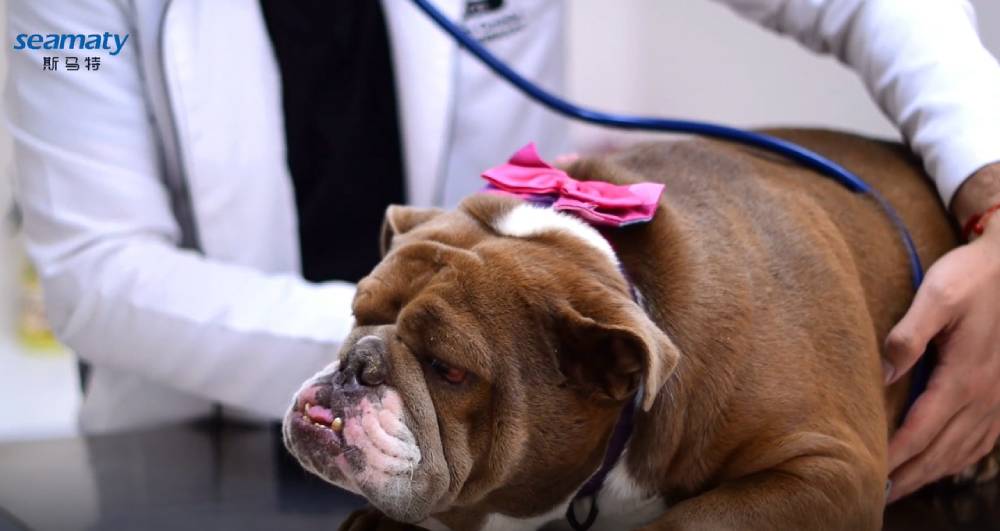release time:2024-09-03 11:41:58

The Seamaty SD3 is a cutting-edge dry chemistry analyzer designed to streamline biochemical testing processes. This innovative device leverages advanced microfluidic and dry biochemical analysis technologies to deliver accurate, efficient, and reliable results.
The purpose of this article is to address common questions and concerns regarding the Seamaty SD3, providing potential users with valuable insights into its capabilities and benefits.
The Seamaty SD3 features fan-shaped reagent disks, allowing for simultaneous testing of multiple samples or parameters on a single disk. This enhances efficiency and reduces reagent waste.
The device employs microfluidic technology to minimize sample volume and prevent cross-contamination. Additionally, the built-in diluent in the reagent disks ensures consistent results for whole blood samples.
The Seamaty SD3 provides real-time results, with a typical turnaround time of 9-12 minutes. This rapid turnaround time is beneficial for time-sensitive clinical decisions.
The Seamaty SD3 is designed for easy operation, with a user-friendly interface and minimal maintenance requirements. It does not require complex sample preparation or extensive training.
The Seamaty SD3 can perform a wide range of biochemical tests, including routine biochemistry, coagulation, electrolyte, lipid, cardiac, HbA1c, and CRP.
The Seamaty SD3 requires a minimal sample volume of 60-100 microliters per panel, making it suitable for various sample types, including pediatric and geriatric patients.
Yes, the Seamaty SD3 is a portable and compact device that can be used in point-of-care settings, such as clinics, emergency rooms, and remote locations.
The calibration and maintenance frequency for the Seamaty SD3 depends on factors such as usage and environmental conditions. However, the device is designed for minimal maintenance, with regular cleaning and periodic calibration checks.
The Seamaty SD3 reagent disks have a shelf life of up to a year when stored at 2-8°C.
Yes, the Seamaty SD3 can be integrated with LIS systems to streamline data management and reporting.
The fan-shaped reagent disk design allows for the simultaneous testing of multiple samples or parameters on a single disk, reducing the need for separate reagent disks and minimizing reagent waste.
Yes, the fan-shaped reagent disks can be used individually to test a single sample or combined to form a circular disk for simultaneous testing of multiple samples. This flexibility provides users with the option to optimize testing based on their specific needs.
The Seamaty SD3 Fully Automated Dry Chemistry Analyzer with Fan-Shaped Reagent Disks offers a reliable and efficient solution for biochemical testing. Its advanced features, including microfluidic technology, rapid turnaround time, and ease of use, make it a valuable asset for healthcare professionals.
Related further reading:
1. The Technology and Principles of the SD3 Fully Automated Dry Chemistry Analyzer
2. Cut Costs, Boost Efficiency: The Automatic Chemistry Analyzer With Fan-Shaped Reagent Panels
3. Three Tests in One: Revolutionize POCT with Seamaty SD3 Dry Chemistry Analyzer
4. What is a Fully Automated Microfluidic Dry Biochemical Analyzer? | Seamaty

2023-05-10
Discover why Seamaty is the leading chemistry analyzer supplier in China. From in vitro diagnostic equipment and reagents to pet care products, Seamaty offers high-quality and efficient medical and veterinary diagnostic solutions. Learn about their commitment to quality, manufacturing and R&D, and expert customer service.

2021-11-11
We can simply understand POCT equipment as a new type of convenient medical equipment for examination. Its biggest characteristic is "small, fast, non-professional operation". It can be convenient for patients and reduce the time for patients to confirm the diagnosis. At the same time, POCT equipment has the function of continuous use to monitor the condition. For example, heart disease patients can quickly understand and control their condition by testing at certain intervals.

2021-10-26
Diet affects a variety of substances in the blood. For example, the concentrations of glucose (GLU), triacylglycerol (TG), ALP and phosphorus. Eating a high-protein diet one day before the blood draw can result in high urea nitrogen (BUN) and uric acid (UA) results. The increase in lipid concentrations in the blood, especially TG, after eating can lead to a milky cloudy serum, which can interfere with biochemical measurements. This may result in high results for bile acids, proteins, calcium and phosphorus. The results of amylase measurements are low.